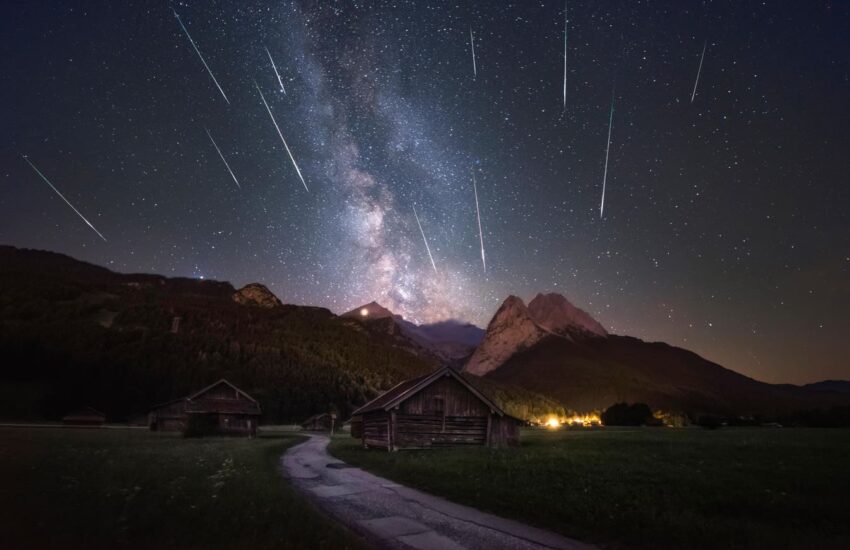2018 Perseids meteor shower with the Milky way, taken in Garmisch-Partenkirchen in the Alps.
Corrected, July 15, 2024: This article has been adjusted with the correct days of the week.
Today sees the beginning of the Perseids, the most popular meteor shower of the year. However, with the peak night still some weeks away, there’s still time to plan a trip to dark skies.
The Perseid meteor shower runs from July 14 through September 1, 2024, and its peak will be on the night of Sunday, August 11 through Monday, August 12. You can see Perseids on any clear night from now through September, but you’ll have the best chance on the peak night.
When Is The Perseids’ Peak Night?
According to the American Meteor Society, the peak is around 04:00 UTC on August 12, which is 12:00 a.m. (midnight) EDT on August 12. Practically speaking, it’s a broad peak, so eight hours either side of this peak will herald just as many “shooting stars” per hour. You can star meteor-gazing after it gets dark on August 11.
That’s ideal timing. A 43%-lit waxing crescent, the moon will be sinking into the southwestern horizon just before midnight in the northern hemisphere (use a moonrise and moonset calculator for the exact time where you are). That will leave the rest of the night free from moonlight. That’s perfect for watching a meteor shower.
If you’ve yet to make a plan for the Perseids in 2024, the best advice is to book Monday off and plan a camping trip to a dark sky and be looking up—with no distractions—for a couple of hours between 11:00 and dawn (use a sunrise and sunset calculator for where you are).
How Many ‘Shooting Stars’ Will There Be?
It’s often said that the Perseids can number 150 per hour close to the peak. Others quote it as 100. Both are on the generous side. These “zenithal hourly rates” refer to what would be seen if a viewer could see the entire sky simultaneously. In practice, expect to get about 50 “shooting stars” per hour. That would be a terrific result.
The Perseid meteors will appear to stream away from the shower’s “radiant” point near the border of … [+]
What Causes The Perseids?
Meteors—“shooting stars”—are small pieces of rock or dust that burn up as they strike Earth’s atmosphere. The Perseid meteor shower is caused by dust and debris left in the inner solar system by comet 109P/Swift-Tuttle. A comet that returns every 133 years, it was discovered in 1862 by both Lewis Swift and Horace Tuttle, according to NASA.
The actual “shooting stars” will strike Earth’s atmosphere at around 37 miles per second and appear from the constellation Perseus in the northeastern night sky as seen from the northern hemisphere. However, they can appear anywhere in the night sky.
How To See The Perseids
Here are some tips on seeing meteor showers from NASA:
- Get as far away from urban light pollution as possible (preferably to an International Dark Sky Park).
- Find a location with a clear, unobstructed view of the night sky.
- Dress warmly—it may get very cold.
- Be patient and watch for at least half an hour, preferably on a reclining chair or ground pad.
- Don’t use a telescope or binoculars—they greatly reduce your chances of seeing “shooting stars.”
- Avoid looking at your cellphone or any other white light—it will destroy your night vision. Use red light only.
Follow me on Twitter/X and Instagram.
Pick up my books Stargazing in 2024, A Stargazing Program For Beginners, and When Is The Next Eclipse?
Wishing you clear skies and wide eyes.

